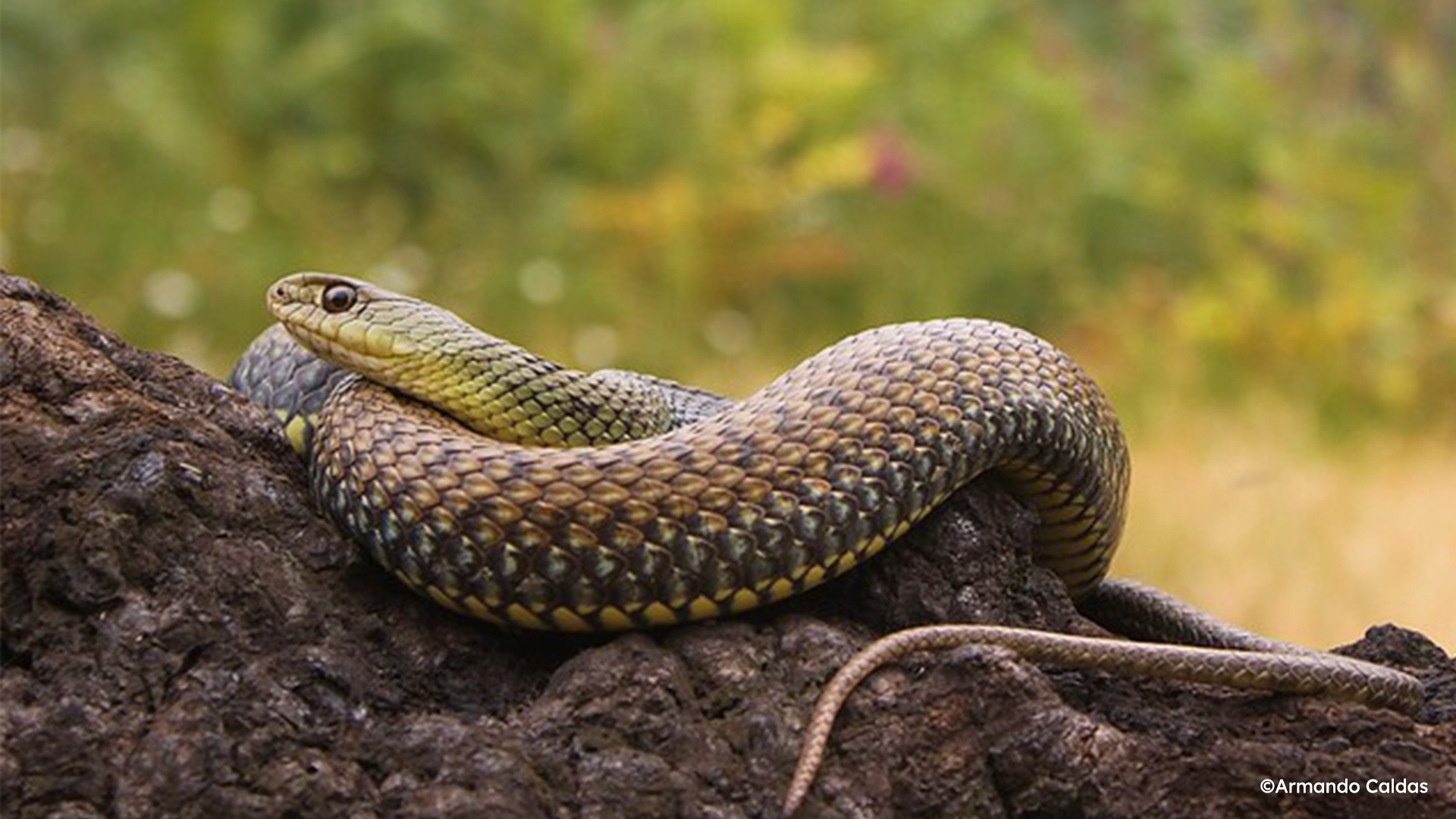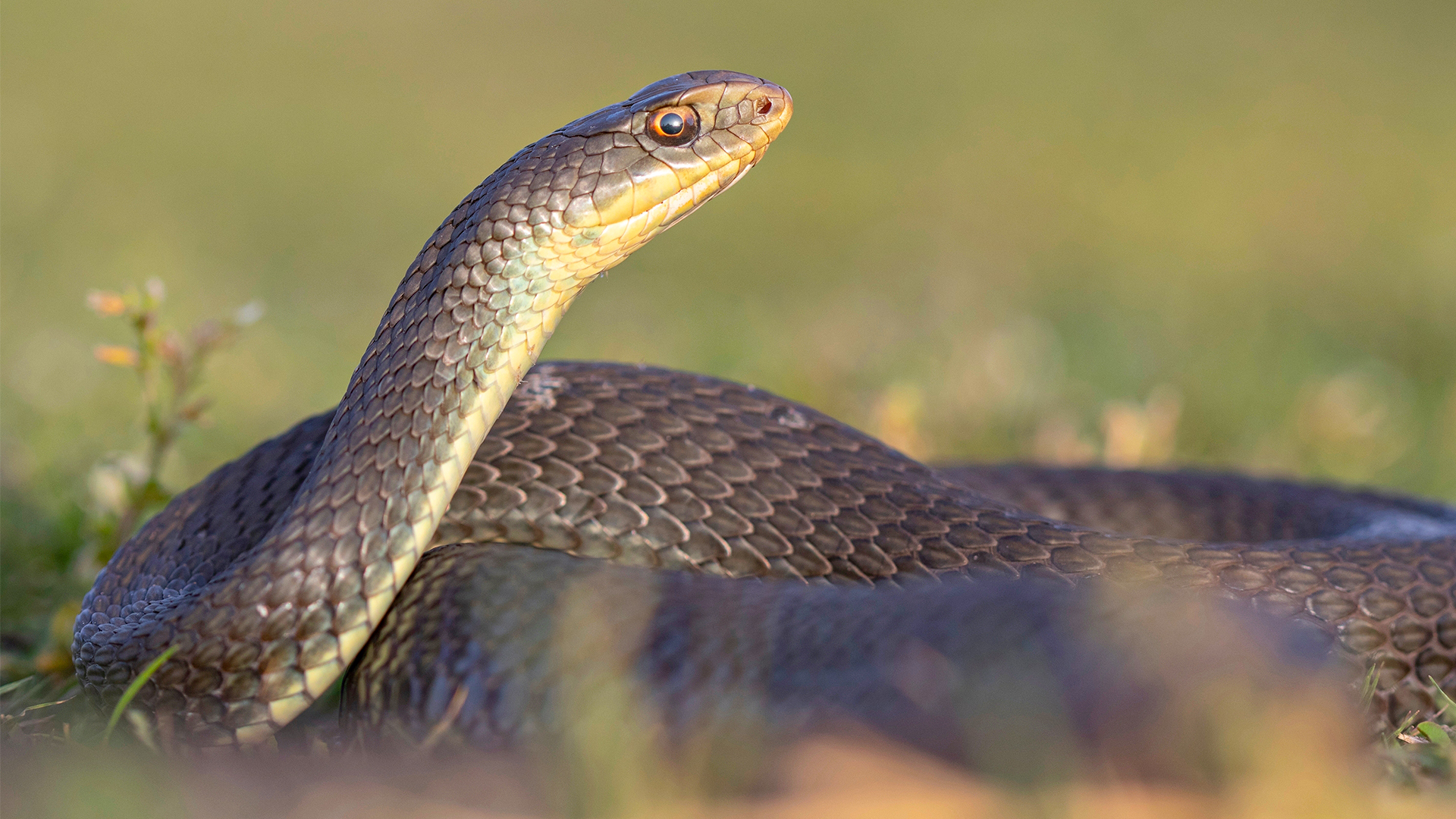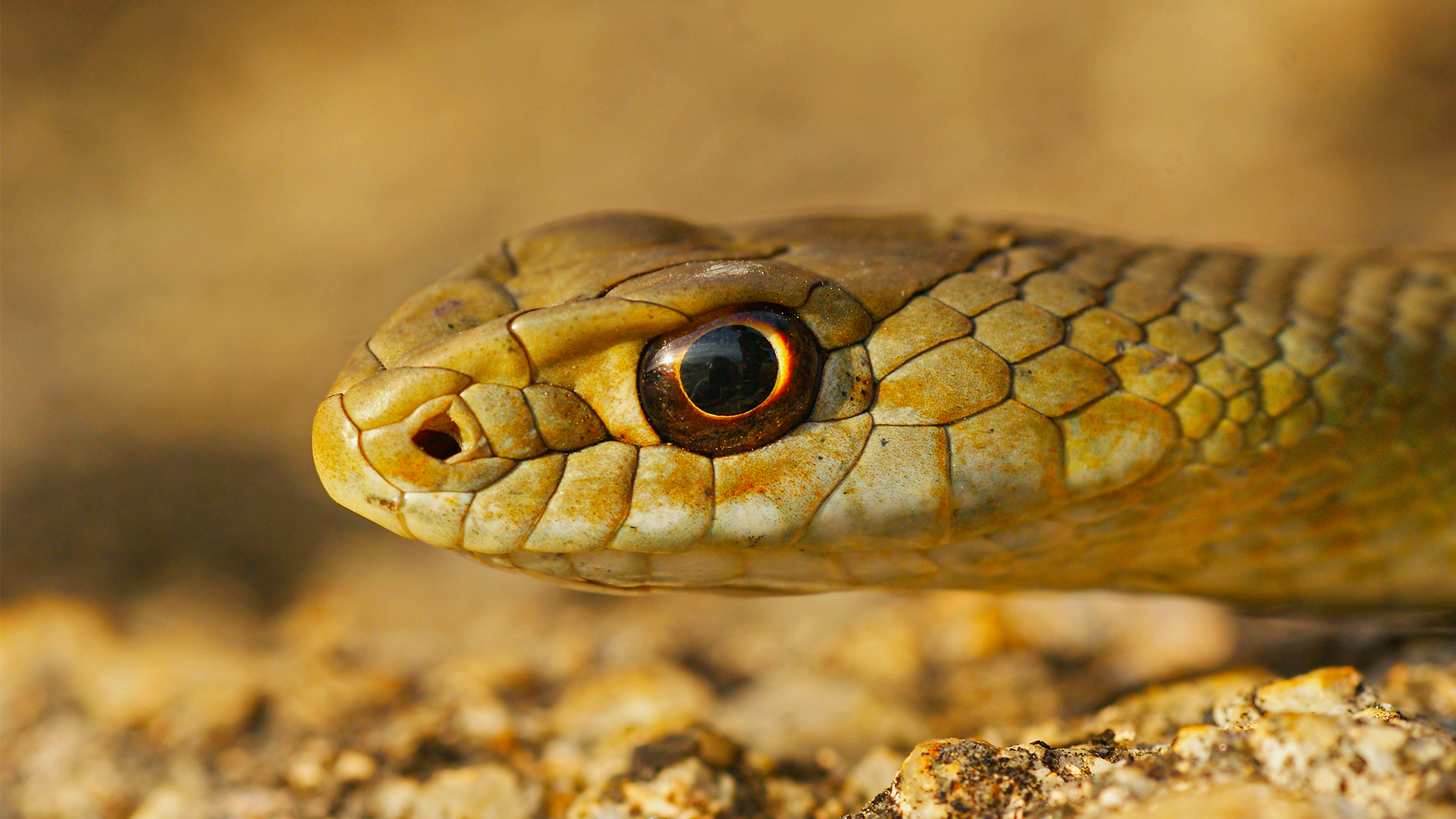Known to be cold-blooded animals with sharp teeth, people have mixed feelings about snakes and many fear this species. Despite the fact that this is the largest snake in Portugal, of “Least Concern” (LC) conservation status under the Red Book of Vertebrates, the Montpellier snake (Malpolon monspessulanus) is actually harmless to humans.
Known also as rat snakes, the adult Montpellier snake prefers to eat rats and small rodents, as well as other snakes, bird chicks that fall from nests, and amphibians. Baby and young snakes, in turn, are insectivores on the first stage and then go on to hunt grenadiers. Whatever the source of their meals, they may attain an impressive length of 2 metres, making them the biggest ophidians in Portugal. In fact, some of the larger specimens can even hunt young wild rabbits and adult ocellated lizards. As they help to control rodents and pests they thus play an important role in ecosystems.
As for its distribution in the national territory, it can be sighted throughout the country, except in higher altitude zones, above 1500 meters, and can even be found at 1410 meters, in the Serra da Estrela mountain range, but sightings above 800 metres altitude are rare.
The Montpellier snake thus live in several habitats, such as shrublands, open rocky areas, autochthonous forests, sandy pine forests, oak forests, among others. And can be sighted also in open farmlands, where there is a high availability of prey (Pleguezuelos, 2003).
This is a very agile species on land, capable of climbing trees when necessary, either to achieve a good sun exposure or to feed itself. It can also be sighted in the water, using the aquatic habitat to hunt or even to flee from natural predators, like birds of prey (booted eagle, snake eagle, golden eagle, goshawk, common kestrel, red kite and black kite) and some mammals, such as wild boar and mongoose.
As for the morphology of the Montpellier snake, we can easily identify its large eyes and narrow, pointed head, in addition to its frontal scales, with prominent supra-ocular scales.
As for the dorsal colouration of adults, it varies between browny-olive and brown or greyish. The third front part of its body displays a very dark spot, while the ventral region is yellowish, although it can also have dark spots. Juveniles, on the other hand, have a uniform green or brown back, with dark and light spots.
Their bodies are covered with scales, characteristic of all reptiles, and so therefore they can preserve its moisture levels in arid climates, aside from causing little friction when moving, thus making them very fast.
If you ever come across a Montpellier snake, remember that there is no reason to worry as it only bites when it does feel threatened. But there is even better news: as this is a kind of venomous snake (that is, it inoculates its neurotoxic venom into its prey), its dentition is opisthoglyphous: the fangs that inject the venom are located at the back of the upper jaw, which, in practice, means that it can only inoculate poison when it is already swallowing its prey. Unlike species whose retractable inoculating teeth are located in the front part of the upper jaw (solenoglyphous dentition), the possibility of a Montpellier inoculating venom in humans in very unlikely.
Did you know that…
Except for Antarctica, Iceland, Ireland, Greenland and New Zealand, where there are no snakes, there are more than 3,000 snake species around the world.
Snakes have no eyelids, no external ears, they smell with their tongue and their jaws are so flexible that they can swallow prey up to three times larger than their own head.
The Montpellier snake reaches sexual maturity between 3 and 5 years of age, reproducing in the spring. The female lays between 4 to 20 eggs and the incubation period lasts about two months. Its longevity can exceed 25 years.
It can be easily sighted between February and October, according to the Amphibians and Reptiles of Portugal guide, when it is most active. After that, it hibernates.
Like other snake species, it sheds its skin several times a year.





